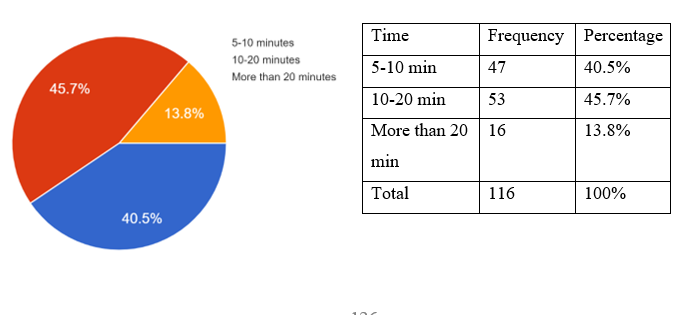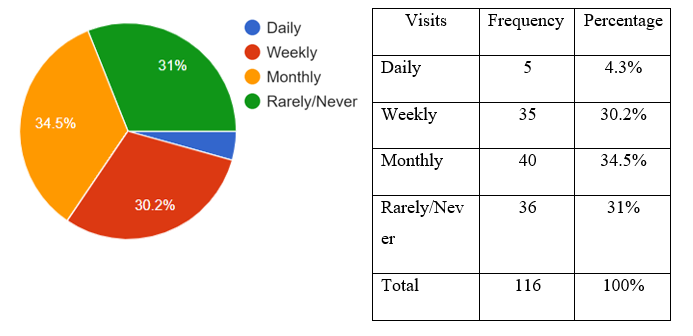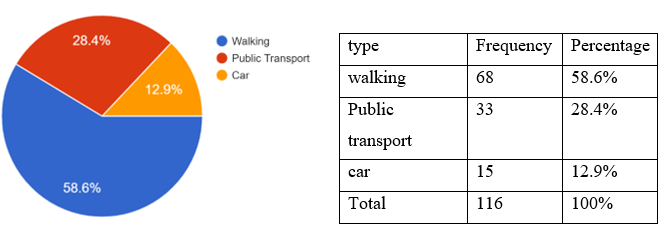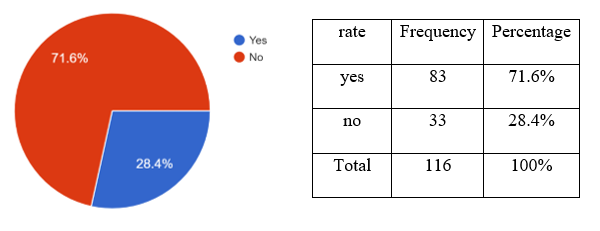Enhancing Accessibility in Urban Green Spaces: A Case Study of Bağcılar, Istanbul
Aeshah Adel Abdullah ALAZZAWİ1
1 Department of Architecture, Altınbaş University, Istanbul, Türkiye
aaieshah4@gmail.com
This article is derived from the author’s master’s thesis, titled "Social Sustainability Through Green Public Spaces: A Case Study of Bağcılar, Istanbul," completed under the supervision of Prof. Dr. Aykut Karaman.
DOI: https://doi.org/10.53796/hnsj65/12
Arabic Scientific Research Identifier: https://arsri.org/10000/65/12
Volume (6) Issue (5). Pages: 140 - 145
Received at: 2025-04-07 | Accepted at: 2025-04-15 | Published at: 2025-05-01
Abstract: The enhancement of the social sustainability depends on the urban green spaces (UGS), which enhance community accessibility, well-being, and social cohesion. Nevertheless, in rapidly urbanizing places such as Bağcılar, Istanbul, green space spreading continues unequal that leading to inequalities in the social connections and quality of the life. This study examines the challenges of the accessibility in green public spaces of Bağcılar distract by using a mixed-methods approach, including spatial analysis and GIS mapping. The findings show that the district has several accessibility problems that relevant its full utilization, including incapable spatial association, a lack of public transportation, and safety fears. The study supports previous research on the social sustainability by highlighting the necessity of guiding principal involvements to confirm the inclusive of the urban planning. increasing the spreading of natural areas, developing connectivity, and giving communities commitment top priority in the urban development are some recommendations.
Keywords: Urban Green Spaces, Accessibility, Social Sustainability, Public Spaces, Community Well-being.
INTRODUCTION
Accessibility to the public spaces and well distributed urban green spaces are becoming increasingly important as cities grow. Green spaces provide ecological balance, mental wellness, and social cohesion (Teimouri, 2023). however, these areas are limited and dispersed poorly in a district such as bağcılar Istanbul which are characterized by the fast urbanization and having a high population density. Analysing accessibility issues and inequalities in UGS distribution within Bağcılar is the aim of this study, which also aims to provide methods for fair distribution.
Rapid urbanization, contemporary lifestyles, and the development of the digital technology have all promoted to the loss in in-person social interactions in urban settings. Online platforms have made it easier to communicate essentially, but they have also made it harder to hold in-person meetings in the public areas. According to the academics such (Whyte ,1980) and (Gehl, 1987), well-planned urban surroundings specifically green public areas are essential for promoting the social connections and providing links within the neighbourhoods.
Citizens are spending longer time in the indoors because of the growing of the urban density, which reduces their exposure to the natural surroundings. Accessible green spaces that serve as gathering areas for the people from all backgrounds to have significant discussions are becoming increasingly required. In verification of a human-centered attitude to the urban planning, (Gehl, 1987) asserts that “life, space, and buildings, not buildings, space, and life, is the identifiable hierarchy of planning.” This viewpoint highlights how the parks and open areas shape the created environment and improve the community well-being, making them fundamental parts of the urban life.
Public open areas are delivered as neutral platforms for social incorporation, promoting connections and collaborations between several demographic groups. When appropriately proposed, these spaces have numerous benefits, such as better mental health, more social cohesion, and distinguished urban liveability. Therefore, one of the most important ways to encourage social sustainability and lessen the negative consequences of fast urbanization is to incorporate well planned green areas into urban development.
LITERATURE REVIEW
2.1 The Concept of Social Sustainability
A comprehensive concept that the social sustainability combines social, economic, and environmental components to build comfortable, equitable, and comprehensive neighbourhoods (Dempsey et al., 2011; Littig & Griessler, 2005). It highlights the social justice, community cohesion, equity, and social inclusion. According to (Dempsey et al., 2011), sustainable communities put an emphasis on environmental sensitivity, cater to the requirements of present and future inhabitants, and offer safe and friendly spaces to everyone.
The ability of a community to protect and develop the social establishments that supports the long-term well-being, cultural incorporation, and quality of the life is what researchers refer to as social sustainability (Stren & Polese, 2000; Karimi & Suzanchi, 2021). Since well-planned urban settings fostering the social interactions and a sense of belonging, it is deeply related to the public areas. (Whyte, 1980) establishes that the social interaction in public places is necessary to improving the general well-being and enhancing the urban experiences. Participation, safety, and accessibility are additional aspects of the social sustainability. Trust, cooperation, and neighborhood involvement are enhanced by access to excellent public areas (Doğu & Aras, 2019). Furthermore, equitable improvement and well-being are thoroughly combined with the availability of the green areas, especially in densely populated urban areas (Abed & Al-Jokhadar, 2022).
Since they improve the quality of life and encourage community communications, urban green areas are fundamental for fostering the social sustainability (Dushkova et al., 2021). Investigation indicates that the societies with more green space have more interconnected social communities and better behavioural outcomes.
2.2 ACCESSIBILITY IN URBAN GREEN SPACES
An unequal number of green areas can sometimes indicate to disparities in the accessibility, specifically in the urban spaces that have a high population density (Wolch et al., 2014). According to GIS-based research, low-income areas are underserved in many cities since green spaces are concentrated in affluent areas (Kazmierczak & James, 2007). Accessibility is impacted by several aspects of the urban design, such as thoroughfare outline, pedestrian pathways, and public transportation availability (Talen, 2010).
According to (Greco and Giacometti, 2013), accessibility is a critical factor of the social sustainability since it allows underprivileged people to access and enjoy both enclosed and open areas. Urban green areas are because they will enable the city citizens to actively or passively separate from the city and re-establish an interaction with the nature. Since their effectiveness depends on their utilization, these areas should be simple to get to, particularly for young people and the elderly (Tabassum & Sharmin, 2013). To increase the accessibility, Natural England, a UK environmentally friendly protection group, created rules that classify the green spaces as open, unconstrained regions. Two hectares must be established within 300 meters of the homes, twenty hectares within two kilometres, one hundred hectares within five kilometres, and five hundred hectares beyond 10 kilometres. These requirements set out the necessities for the size and layout of the green areas that are accessible. Furthermore, each 1,000 inhabitants should have access to one hectare of local wildlife reserve (Pengelly Consulting, 2010).
Accessibility is influenced by both psychological and physical access. Access is challenging due to long commutes, high service costs, and a lack of pedestrian-friendly pathways; however, other issues, including a lack of staff, poor service, and cultural disparities, also play a part (Gibson et al., 2019). By developing expansive green areas that benefit all users and encouraging connection through an expansion of the activities, accessibility may be enhanced (Pengelly Consulting, 2010).
The facilitate with which citizens can have the access and use the green areas is indicated to as accessibility, and it is regularly evaluated by the proximity and connectedness. Findings have shown that the underserved communities frequently have limited and worse green public parks. The accessibility of the open areas in Bağcılar has been extend limited by urban growth and the high-rise constructions, involving a reassessment of the planning regulations.
METHODOLOGY
A mixed-methods strategy is used in this study:
- GIS Mapping: Examining Bağcılar’s green areas distribution
- Surveys: gathering information about how 116 locals utilized and view green places.
An important case study for analyzing accessibility of the green public places in a densely populated district is Bağcılar, Istanbul. With a population of over 700,000, it is one of the most densely inhabited districts in Istanbul, occupying around 22 square kilometers. The district lacks open spaces and recreational places as a result of high-rise residential buildings and fast urbanization.
Bağcılar’s urban growth was mostly driven by the rapid migration and housing requirement, leaving limited capacity for the planned green public parks and open spaces, in contrast to many urban districts where the green areas are spread in a spare land parcel. As a result, there are now underused and dispersed green spaces that do not adequately promote social sustainability. To improve urban liveability, certain efforts have been undertaken to include little green areas, such pocket parks, in between residential structures. Access to these areas is nevertheless unequal despite these initiatives, especially in lower-income areas.
Before experiencing a major urban development in the latter half of the 20th century, Bağcılar was historically an agricultural area. These days, it is typified by a lack of public parks, a lack of pedestrian-friendly zones, and severe traffic congestion. Bağcılar’s lack of the green areas has created worries about the social sustainability because of many citizens don’t have the easy access to the parks and natural areas.
The aim of the study is to evaluate the accessibility of the Bağcılar’s green public areas while accounting for the social, economic, geographic and the connectivity elements that influence how the residents use these places.
RESULTS AND DISCUSSIONS
4.2 Walkability and Connectivity Challenges
According to survey data, inadequate pedestrian infrastructure prevents 58% of respondents from finding their closest green places to be easily accessible. A lot of parks are encircled by busy highways with insufficient pedestrian crossings, which deters people from walking. The use of public parks has declined because of the absence of clear, secure walking paths.
Table 1-1: How far is the nearest green space from your home

45.7% of participants reside 10–20 minutes distant from green areas, 40.5% within 5–10 minutes, and 13.8% more than 20 minutes away, according to (Table1-1) Even though the majority have the appropriate access, significant numbers, facing challenges, emphasizing the need for having better accessibility.
Table 1-2: Visits of The Participants to the Nearest Green Public Spaces

Examining the participants’ visitation frequency, it was found that 35.1% of them went once a month, 32.5% went infrequently or never, 27.3% went in a week, and 5.8% went in every day (Table 1.2) The evaluation of the replies reveals that the location is not a popular destination for daily visits.
4.3 Public Transportation and Proximity Barriers
Lack of connections between the natural areas and public transportation make it even harder for the accessibility. Many green places are not well incorporated within the urban transit system, as shown by the finding of the survey over 41.3% of respondents believed that driving or taking public transportation was required to get to the green public parks.
Table 1-3: Transportation Method They Use to Reach the Green Spaces

According to (Table 1.3) 58.6% of participants walk, 28.4% take public transit, and 12.9% drive to go to the green spaces. This proposes that most of the green areas are within walking distance, but some citizens depend on the transport, emphasizing the capacity gaps in the accessibility.
4.1 Accessibility Disparities in Green Space Distribution

GIS mapping tool proved a remarkable disparity in the Bağcılar’s accessibility to the green areas. According to the data, there are fewer and smaller green areas in low-income communities than in higher-income districts. A crucial criterion for everyday outdoor activities is the absence of a park within 500 meters of walking distance for over 60% of the population.
4.4 Safety Concerns and Usage Limitations
A considerable barrier to the accessibility detected in the research was safety issues. 65% of respondents identified that discomfort using the parks at night because of bad lights and lack of visible security. Furthermore, 40% of female respondents specified that safety concerns avoided them from visiting the parks commonly. Checking the secure and appropriately maintained green areas is fundamental for fostering fair access and increasing park use.
Table 1-4: Using Green Spaces at Night

(Table 1-4) shows that 71.6% of the participants use the green areas at night, while 28.4% don’t. With a majority feel comfortable utilizing these spaces in the evening to nighttime accessibility and safety.
the findings of this study emphasize the significant accessibility barriers that limiting the effective usage of the green areas in Bağcılar. Underutilization has been increased by the lack of incorporated of pedestrian-friendly infrastructure, public, safety provisions, and equal distribution. Furthermore, the lack of communities’ involvement in the urban proposing these issues, leading to green areas that do not completely provide the needs of citizens. Adopting these challenges through strategic planning, infrastructure developments, and community involvement is critical to confirming that the urban green areas serve as accessible, inclusive, environments for all.
CONCLUSION AND RECOMMENDATIONS
This investigate shows that social and economic modifications, unequal distribution, and poor transportation severely limit access to the green public areas in Bağcılar. Five main recommendations are suggested by the findings:
- Create new parks in the communities that are underutilized to increase green areas there.
- making public transportation more walkable, providing better walkways, and including green spaces in the lines, to enhance the connectivity and the infrastructures.
- Promote comprehensive planning through involving neighborhood groups in the selections to ensure that the creation of future green spaces fulfils community requirements.
- • Increase Environmental benefits, including Plant trees and contributed environmentally friendly initiatives into actions to maximize ecological benefits.
- Enhance Policy Organization and Management: Establish detailed rules to ensure the strategy and preservation of the ecologically sustainable green spaces.
Bağcılar could move into a more environmentally sustainable distract where all citizens have equal access to the green spaces by solving these problems. The long-term effects of increased accessibility on community well-being that should be examined in future studies.
REFERENCES
Abed, A., & Al-Jokhadar, A. (2022). Common space as a tool for social sustainability. Journal of Housing and the Built Environment.
Dempsey, N., Bramley, G., Power, S., & Brown, C. (2011). The social dimension of sustainable development: Defining urban social sustainability. Sustainable development.
Doğu, F. U., & Aras, L. (2019). Measuring social sustainability with the developed MCSA model: Güzelyurt case. Sustainability.
Dushkova, D., & Haase, D. (2023). Resilient cities, healthy communities, and sustainable future: how do nature-based solutions contribute.
Gibson, S., Loukaitou-Sideris, A., & Mukhija, V. (2019). Ensuring park equity: a California case study. Journal of Urban Design.
Gehl, J. (2011). Life between buildings.
Greco, A., & Giacometti, V. (2013). Accessibility and Social Sustainability. Assessment tools for urban spaces and buildings. In Proceedings PLEA 2013.
Kazmierczak, A. E., & James, P. (2007). The role of urban green spaces in improving social inclusion.
Karimi, M. and Suzanchi, K. (2021), “Promoting Social Sustainability in Public Spaces through Physical Approaches”, in: First International Conference on Future of Urban Public Space, Tehran, Iran.
Littig, B., & Griessler, E. (2005). Social sustainability: a catchword between political pragmatism and social theory. International journal of sustainable development.
Pengelly Consultants. (2010). ‘Nature nearby’: Accessible Natural Greenspace Guidance. Natural England.
Polèse, M., Stren, R. E., & Stren, R. (Eds.). (2000). The social sustainability of cities: Diversity and the management of change. University of Toronto press.
Tabassum, S., & Sharmin, F. (2013). Accessibility analysis of parks at urban neighborhood: The case of Dhaka. Asian Journal of Applied Science and Engineering.
Talen, E. (2010). Affordability in new urbanist development: Principle, practice, and strategy. Journal of Urban Affairs.
Teimouri, R., Karuppannan, S., Sivam, A., Gu, N., & Yenneti, K. (2023). Exploring International Perspective on Factors Affecting Urban Socio-Ecological Sustainability by Green Space Planning. Sustainability.
Whyte, W. H. (1980). The social life of small urban spaces.
Wolch, J. R., Byrne, J., & Newell, J. P. (2014). Urban green space, public health, and environmental justice: The challenge of making cities ‘just green enough’. Landscape and urban planning.
